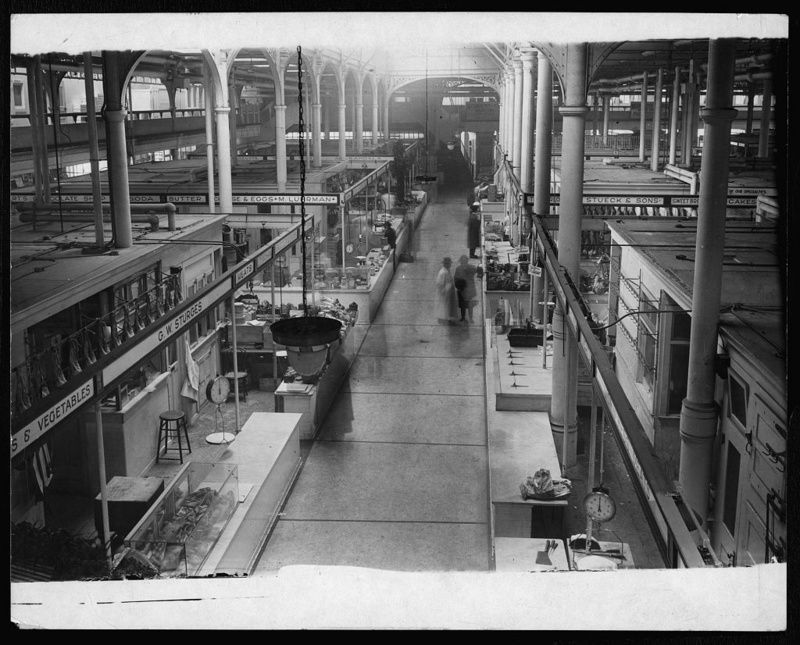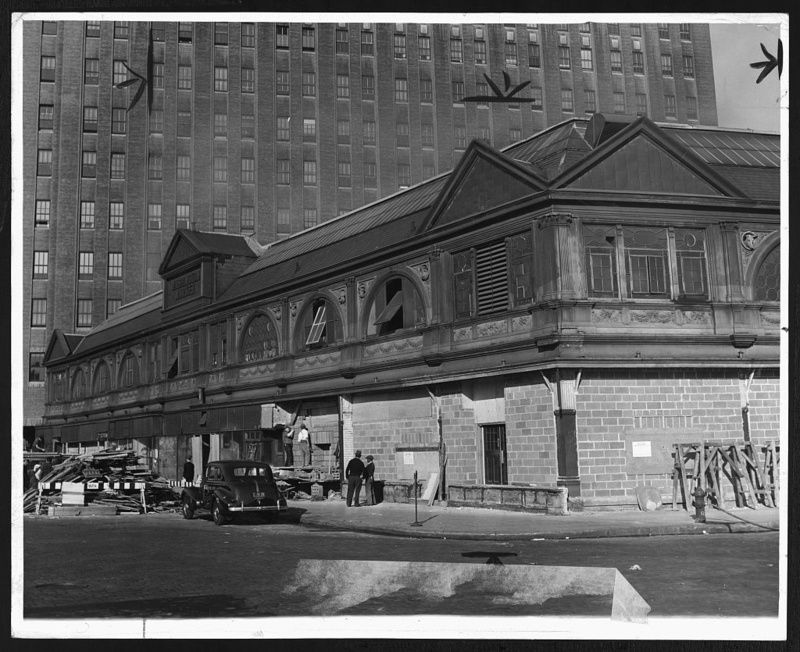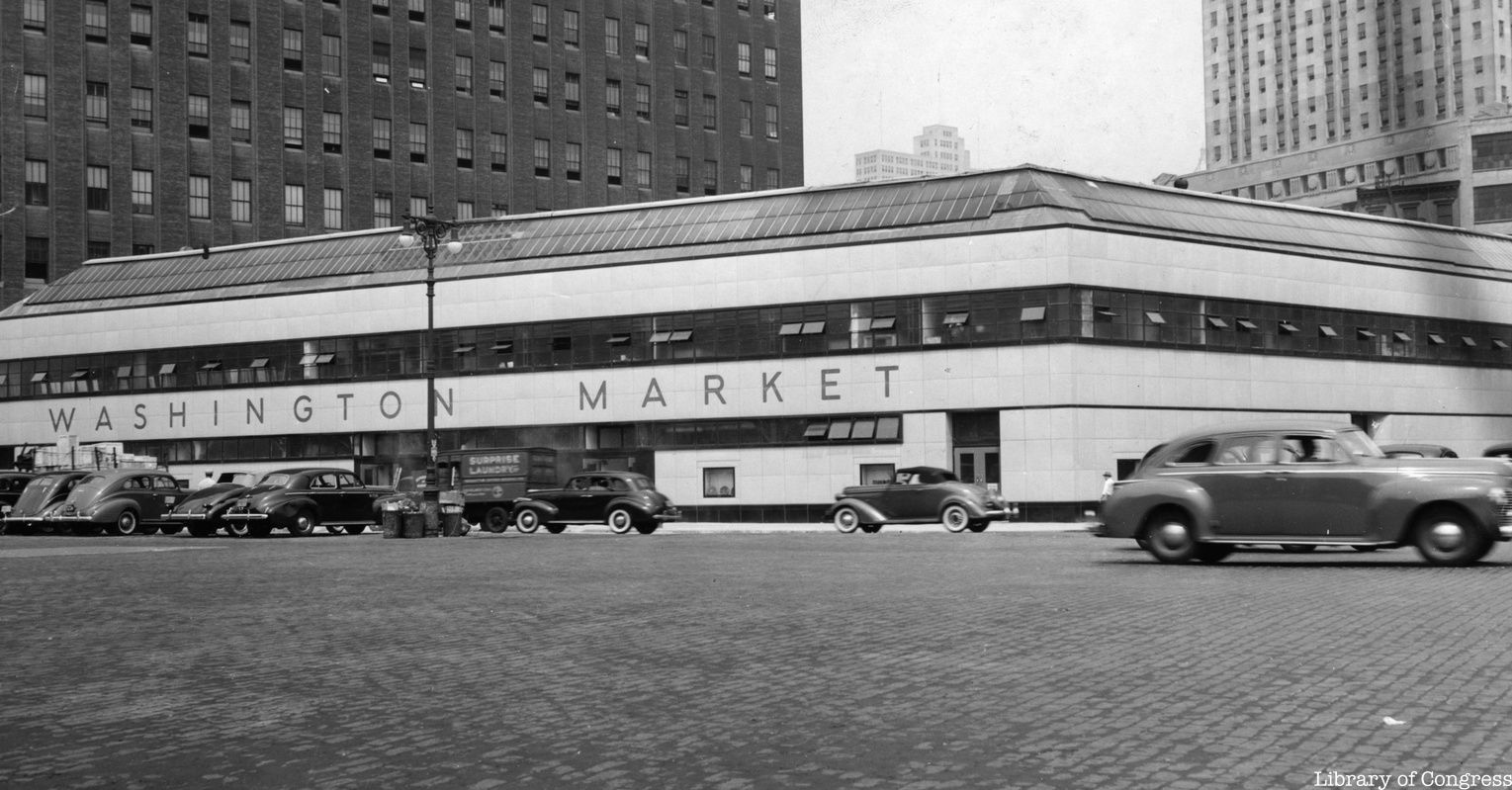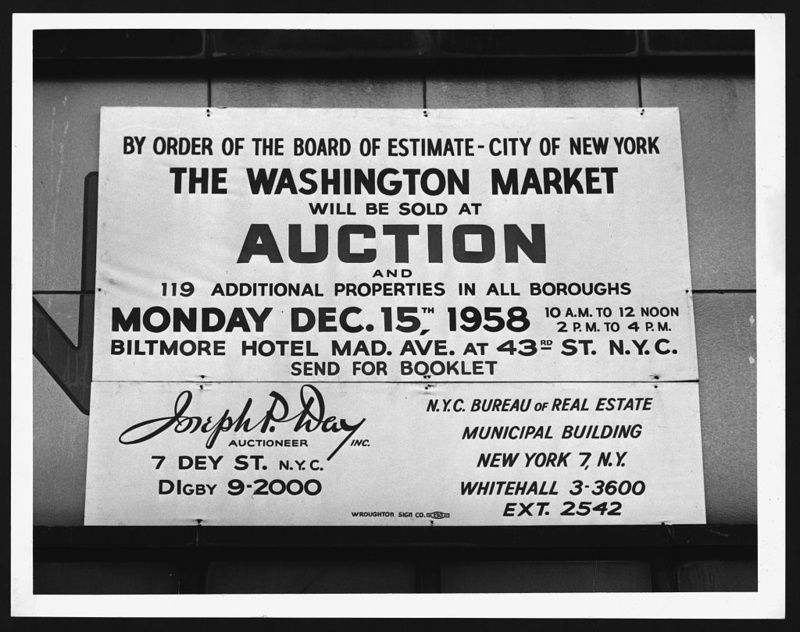After-Hours Tour of the Fraunces Tavern Museum: "Path to Liberty"
Explore a new exhibit inside the oldest building in Manhattan, a witness to history throughout the Revolutionary War Era!


New York City’s Washington Market was, at various points throughout its 150-year-long history, dubbed “the largest and by far the most important market in the city” but also “the worst eyesore.” Originally constructed in 1812 at the southern end of what we now call Tribeca, Washington Market was just one of the many sprawling markets that sprung up in Manhattan in the 1800s including the Gansevoort Market, The West Washington Market, the Fulton Fish Market, and the Manhattan Market, among others. The Washington Market was rebuilt and renovated multiple times, but ultimately demolished to make way for another notable development.

Learn more about Washington Market and other historic buildings in Tribeca in a virtual talk with economist Lynn Ellsworth, founder of the Friends of Duane Park, the Tribeca Trust, Humanscale NYC, and the Empire Station Coalition! Ellsworth will explore little-known stories of the neighborhood, as highlighted in the new book, Tribeca & Its Architecture.
In the early 19th century, Tribeca was an uptown residential neighborhood, but as urban expansion stretched northward and the city’s population grew, it became a center of commerce and trade. It was well situated along the Hudson River where ships could unload goods at the piers. As the city’s transit systems grew the neighborhood also gained access to train lines.
In addition to more land, the city’s booming population also needed something else, more food. To accommodate hungry New Yorkers, the Common Council Market Committee set up food markets in various neighborhoods. The Washington Market was constructed in 1813 and expanded in the 1820s and 1830s until it was the largest market in the city, and one of the largest wholesale markets in the nation. By 1835, there were a total of 14 markets created by the Common Council.

The Washingotn Market took up an entire city block from Washington Street (now Greenwich Street) to West Street and from Fulton Street to Vesey Street. Market vendors also occupied the ground floors of surrounding rowhouses and townhouses. It was rivaled in size only by the Fulton Market in the South Street Seaport on Manhattan’s East Side.
The larger markets became known for certain types of food: Washington for produce, Fulton for fish, and Gansevoort for meat. Though they each had their own specialty, each market still boasted an impressive variety of vendors. At the height of the Washington Market’s success, it was home to over 500 vendors. The 1939 WPA Guide to New York City states you could find “caviar from Siberia, Gorgonzola cheese from Italy, hams from Flanders, sardines from Norway, English partridge, native quail, squabs, wild ducks and pheasants; also fresh swordfish, frogs legs, brook trout, pompanos, red snappers, codfish tongues and cheeks, bluefish cheeks, and venison and bear steaks,” all at the Washington Market.
In 1914, a new market building was constructed. The new building replaced a structure from 1884 and gave the vendors new stalls and more sanitary conditions in which to sell their goods. The New York Times article which described the new 40,000-square-foot building likened it to its own mini-city with its own streets, refrigeration, water, light, drainage, and telephone systems.
The market continued to flourish throughout the early 20th century, but by the 1930s, the once new building was starting to become outdated. At the end of the 1930s, the WPA started to rehabilitate the aging market structure. In 1941, a modern market debuted. The ornate stained glass windows and terra cotta embellishments of the facade were replaced by sleek enameled steel panels with small boxy windows.


After the newly renovated market was unveiled, the historic retail space remained in business for almost another 20 years. By the 1950s however, problems began to plague the market once again. Operating inside the same structure built in 1914 and a maze of sprawling former residential buildings in the surrounding blocks, the market was crowded. Suppliers and customers had difficulty getting their goods to and from the market the narrowband congested streets. The market was losing money each year and the city began to see the land on which it sat as a commodity more valuable than the market itself.
The final blow to the market was the Washginton Street Urban Renewal Plan which put forth a master plan for an area the size of 24 city blocks around the market site. The plan included housing, a college, a public park, and required the demolition of many historic structures. Like the Fulton Fish market and other food purveyors, the Washington Market vendors were relocated to new facilities in Hunts Point in the Bronx in the early 1960s after the Tribeca facility was shut down in January 1957.

The 1914 market building was demolished along with many of the surrounding rowhouses and townhouses that were occupied by vendors. One stretch of nine townhouses on Washington Street designed by architect John McComb Jr. (1763–1853), who also designed City Hall and Gracie Mansion, was spared in one of the city’s early preservation campaigns. Built between 1796 and 1828, the houses were moved to Harrison Street. Another market-related building that was spared was 258 Washington Street or the Laing Stores building, an early cast-iron structure designed by architect-engineer-inventor James Bogardus in 1848. The building was given landmark status in 1970 and dissambled for safe keeping, but was stolen, twice!
The nearby Radio Row and the enthnic enclave of Little Syria were also destroyed along with the market. At the site of the Washington Market today, you’ll find One World Trade, the tallest building New York City. Though many of the city’s early markets have been lost, the food market tradition continues. Every year, the city welcomes seasonal night markets and food festivals while new food halls pop up in busy areas like the Chelsea Market, Pier 57, and Dekalb Market Hall. Historic food markets like the Arthur Avenue Retail Market the new Essex Street Market continue to feed hungry New Yorkers.
Next, check out 10 Secrets of Tribeca
Subscribe to our newsletter